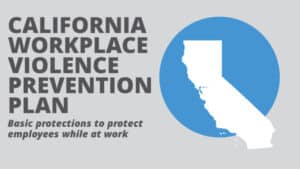Written by Christopher B. Dolan and Mari Bandoma Callado
This week’s question comes from Geraldine W. in San Leandro:
My employer informed us that we will be returning to the office three times a week beginning in August. I am fully vaccinated against COVID-19 but I am worried about safely returning to work because I believe some of my co-workers are not vaccinated. What measures are required for employers to re-open safely and reduce the risk of COVID-19 infections at work? Now that California lifted the mask mandate, can employers require masks indoors? Are we still required to maintain physical distance? Can employers require employees to get a COVID-19 vaccine? Is there anything I can do if my employer does not appear to be doing what they are supposed to do to protect workers from getting COVID-19?
Dear Geraldine: Thank you for asking several important questions. Cal/OSHA and other state agencies have developed guidance on the steps employers should take to reduce the risk of COVID-19 at work. Employees have a right to a safe and healthy workplace. Employers must establish, implement and maintain an effective COVID-19 Prevention Program, provide effective training and instruction to employees on how COVID-19 is spread, infection prevention techniques, and information regarding COVID-19-related benefits that affected employees may be entitled to under the law, and exclude employees who have COVID-19 symptoms and/or not fully vaccinated.
Unless they are covered by the Cal/OSHA Aerosol Transmittable Diseases standard, employers must comply with the COVID-19 Prevention Emergency Temporary Standards (ETS) which were revised on June 17, 2021. These revised standards set forth requirements for employers relating to training, testing, face coverings, exclusion of employees with COVID-19 and those who had close contact with them, and more.
MASKS AND PHYSICAL DISTANCING REQUIREMENTS IN THE WORKPLACE
Key amendments to the Cal/OSHA ETS on June 17, 2021 with regards to masks and physical distancing requirements include:
| Fully Vaccinated Employees |
Unvaccinated Employees |
|
| Face Coverings Indoors (including in vehicles) | Not required except for certain situations during outbreaks and in settings where CDPH requires all persons to wear them. However, employees are explicitly allowed to wear a face covering without fear of retaliation from employers.
Note: Employers must document the vaccination status of fully vaccinated employees if they do not wear face coverings indoors. |
Required. |
| Face Coverings Outdoors | Not required. |
Not required. |
| Physical Distancing | Not required except where an employer determines there is a hazard and for certain employees during major outbreaks. |
Not required except where an employer determines there is a hazard and for certain employees during major outbreaks. |
| Access to Respirators
|
May request N95 respirators for voluntary use from their employers at no cost and without fear of retaliation from their employers. |
|
| Testing Requirements | Fully vaccinated employees do not need to be offered testing or excluded from work after close contact unless they have COVID-19 symptoms. |
Employees who are not fully vaccinated and exhibit COVID-19 symptoms must be offered testing by their employer. |
Note that there are Cal/OSHA industry-specific mandates and local orders that may have different requirements. Also, employers can have policies that are stricter than those required by the Cal/OSHA, but accommodation must be made for those:
- Who cannot wear face coverings due to a medical or mental health condition or disability;
- Who are hearing-impaired or communicating with a hearing-impaired person; and
- When an employee performs specific tasks which cannot be performed with a face covering.
VACCINATIONS
Under the California Fair and Employment Housing Act, employers may require employees to receive an FDA-approved vaccination against COVID-19 infection so long as employers do not discriminate against or harass employees on the basis of a protected characteristic, provide reasonable accommodations related to disability or sincerely-held religious beliefs or practices, and do not retaliate against anyone for engaging in protected activity (such as requesting a reasonable accommodation).
EMPLOYERS’ DUTY TO MAINTAIN A SAFE AND HEALTHY WORKPLACE
If you believe that your employer is not doing what they are supposed to do to protect workers from getting COVID-19, you may communicate with your employer using the pre-designated channels of communication that they are required to have in place for employees with regards to matters of workplace safety and health. You may also file a confidential complaint with the nearest Cal/OSHA district office. Whether you choose to raise your concerns directly to your employer or by filing a complaint with Cal/OSHA, the law prohibits your employer from discriminating or retaliating against you for complaining about safety or health concerns in the workplace.










